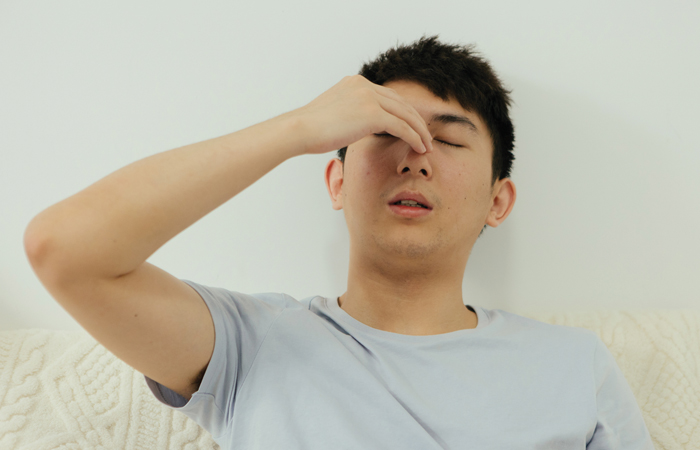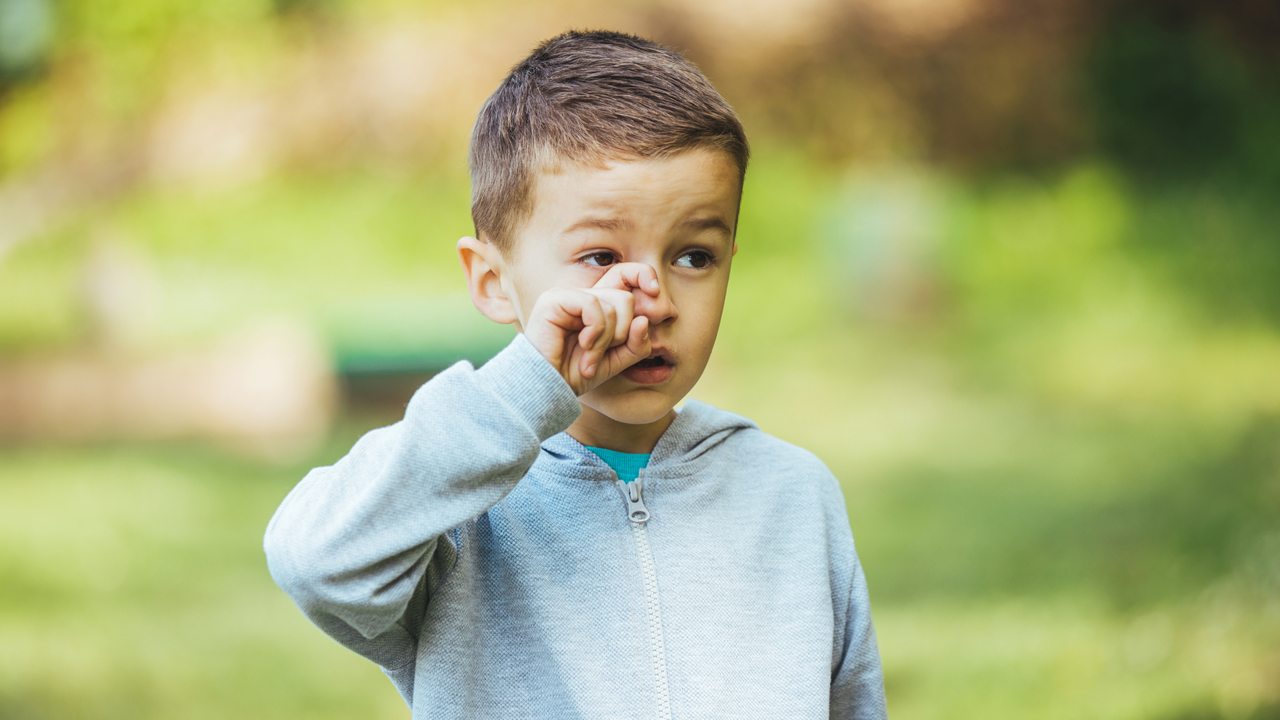In OTC
Follow this topic
Bookmark
Record learning outcomes
Scientists at the University of Worcester have warned that the tree pollen season is likely to be worse than usual this year, with an increase in hayfever symptoms over the coming weeks. Hayfever now affects one in five people in the UK, with tree pollen affecting around a quarter of sufferers, according to the Met Office.
Although hayfever often starts in childhood or the teenage years, more adults are developing it for the first time later in life. This means increasing numbers of people are seeking advice and support for troublesome symptoms. Hayfever is usually easy to manage with pharmacy products and lifestyle measures, and pharmacy teams are well-placed to advise on symptom relief. However, severe symptoms that affect daily life may need prescribed treatments.
Seasonal changes
Hayfever (seasonal allergic rhinitis) usually occurs at specific times of the year. Tree pollen allergy generally runs from March to May or June, followed by grass pollen allergy in the summer, and then weed pollen allergy, which usually lasts from June until September. Hayfever sufferers who are allergic to more than one type of pollen may struggle with symptoms for months at a time. Some people who are allergic to pollen (especially tree pollens) get an itchy mouth or throat when eating certain fruits, vegetables or tree nuts. This can happen at any time of the year and is called oral allergy syndrome.
Research shows that climate change is making pollen seasons longer and more severe. According to ENTUK (the professional organisation representing ear, nose and throat surgery), weather patterns can help to determine if the year’s pollen season comes early or late, or if there’s a bumper season.
“There seems to be a trend for hayfever to start earlier due to global warming,” says Dr Adrian Morris from the Surrey Allergy Clinic. “Tree pollen allergy is now starting from as early as February, and worsening hayfever to grass pollen seems to be during May and June.”
“Hayfever sufferers who are allergic to more than one type of pollen may struggle with symptoms for months at a time”
Main symptoms
When someone has hayfever, their body identifies pollen as harmful. Their immune system produces IgE antibodies to protect against the allergen, which triggers the release of histamine and other chemicals, leading to hayfever symptoms. Hayfever affects everyone differently, but the main symptoms are a blocked or runny nose, persistent and frequent sneezing, an itchy throat or ears, coughing, and itchy, watery, red, swollen eyes (allergic conjunctivitis). Some people also experience headaches, earache and fatigue, and severe symptoms can lead to complications.
“The main symptoms that encourage people to seek medical advice are an itchy palate or throat, itchy eyes or constant sneezing,” says Dr Adrian Morris. “If people have a lot of mucus, this can lead to wheezing, and they could develop a chest infection or sinus infection.”
While hayfever is often considered to be only a minor nuisance, it can interfere with sleep, which may in turn affect school, work and daily activities. According to Dr José Costa, senior allergy consultant at The Childrens Allergy Clinic (thechildrensallergy.co.uk), research shows clear links with airborne allergies and longer-term chronic illnesses. “40 per cent of hayfever sufferers go on to develop allergic asthma, and the UK has the highest death rate of asthma in Europe,” he says.
“The impact of airborne allergies such as hayfever on the airways causes inflammation and oxidative stress in the various organs over time, making people more susceptible to illnesses such as chronic obstructive pulmonary disease and dementia. Depression, due to disturbed or a lack of sleep, can also be quite significant.”
“Hayfever now affects one in five people in the UK”
Self-help advice
It’s impossible to avoid pollen completely, but allergy experts recommend that hayfever sufferers monitor local pollen forecasts and stay indoors when pollen counts are very high. Pollen counts tend to be highest on warm, dry days, especially in the early morning and early evening.
Other measures to reduce pollen exposure include:
- Wearing wraparound sunglasses and a hat with a large brim to help block pollen from getting into the eyes
- Wearing a mask outdoors
- Avoiding freshly cut grass or walking on grass
- Avoid drying clothes outside as these may collect pollen
- Showering, washing hair and changing clothes after being outside
- Keeping windows and doors shut as much as possible when indoors, especially at night
- Keeping the car windows closed and using a pollen filter in the car air vents – pollen counts tend to be highest on roads with grass verge
- Wiping down pets’ coats with a damp microfibre cloth to remove pollens after they’ve been outside
- Vacuuming regularly and dusting with a damp cloth – ideally using a HEPA filter in the vacuum cleaner.
Treatment
Hayfever medicines can be very effective, but it’s important that customers use the right product to suit their needs and know how to use it properly. George Sandhu, deputy superintendent pharmacist for Well Pharmacy, encourages hayfever sufferers to get ahead of hayfever season by taking their antihistamines early. This enables the body to build up resistance to rising histamine levels. He says: “If patients begin to take antihistamines one to two weeks before hayfever starts, there is a real likelihood they will see significantly reduced symptoms come the beginning of summer.”
If customers have several hayfever symptoms, they may need to use a combination of treatments, such as hayfever tablets with corticosteroid nasal sprays and allergy eye drops. It’s important to check whether they are taking any other medicines to avoid contraindications, and pregnant and breastfeeding women should be advised to speak to their midwife or GP first.
Oral antihistamines
Oral antihistamines often ease mild to moderate hayfever symptoms without the need for other treatments. These are most effective for itching, sneezing and a runny nose, but have less impact on a blocked nose. It’s important to choose non-drowsy antihistamines for hayfever – generally taken once a day. Cetirizine and loratadine are the most commonly used antihistamines available to buy over-the-counter (OTC) as small tablets or liquids (for children or adults who can’t take tablets easily). Acrivastine, another non-drowsy antihistamine, is also available OTC as tablets (or can be prescribed in a nasal spray). If customers find that their current antihistamine isn’t working, they may need to try a stronger product, such as fexofenadine tablets, which used to be prescription-only, but can now be bought OTC from the pharmacy.
Older types of antihistamines, like chlorphenamine maleate, can cause drowsiness. Generally, these shouldn’t be taken for hayfever, although some people find these help them sleep at night. These types of antihistamines need to be taken several times a day and aren’t suitable for everyone, including those with epilepsy, an enlarged prostate gland or primary angle closure glaucoma.

Nasal sprays are a great way to ease congestion, but these need to be used consistently to be effective.
Steroid nasal sprays
Steroid nasal sprays for hayfever contain corticosteroids such as fluticasone or beclometasone to dampen down inflammation in the nose. These should be sprayed directly into the nose once or twice a day, depending on the product. The nasal sprays are more effective than oral antihistamines for a blocked nose or moderate to severe symptoms, and many doctors recommend them as a first-line treatment.
It can take at least a few days for the sprays to work, so it’s best to use them for two weeks before pollen counts are expected to rise. The sprays also need to be used regularly to work properly, acting as preventatives as well as treatments. If the nose is very blocked and the steroid nasal spray can’t get through, customers could use a decongestant nasal spray for a couple of days first.
Steroid nasal sprays don’t usually cause any major side effects, but some people find these irritate the inside of the nose or cause a dry, irritated throat and unpleasant taste in the mouth.
Allergy eye drops
Most allergy eye drops contain sodium cromoglicate, which stops the release of histamine. Other eye products for hayfever contain soothing ingredients, such as witch hazel and glycerin. Eyelid sprays offer an alternative for people who don’t like to use eye drops. Soft contact lens wearers need to check that they can use these products, as some contain preservatives. Cooling eye pads may help to ease any eye swelling, irritation and redness.
Drug-free treatments
Some people prefer to use drug-free remedies for hayfever, especially if they have mild symptoms or can’t use conventional medicines due to contraindications or side effects. Nasal allergen barrier balms, or petroleum jelly, can be applied inside the nostrils to help stop pollen entering the nose. Saline nasal sprays and rinses can be used to wash away allergens from inside the nose, moisten nasal passages and thin out nasal mucus.
“These products can be effective in decreasing the allergen exposure to the eyes or nose, alleviating symptoms,” says Dr Costa. “However, these will not prevent the onset of hayfever symptoms and might not decrease their severity in every case.”

It’s important for pharmacy teams to be able to explain all of the different OTC options available for managing hayfever.
“There seems to be a trend for hayfever to start earlier due to global warming”
Further help
If OTC remedies aren’t working, customers should be advised to visit their GP for prescribed antihistamines (e.g. levocetirizine and desloratadine) or prescription-strength nasal sprays, including those containing a corticosteroid and an antihistamine in one product. Allergy tests aren’t usually needed for hayfever symptoms, but a GP may suggest allergy testing if the trigger isn’t clear – this will involve a referral to an allergy specialist. An allergy consultant may offer specialist medicines (such as a leukotriene-receptor antagonist, antihistamine nasal spray or, occasionally, a short course of oral steroids) or immunotherapy (see the boxout for details).

Common nasal conditions
If hayfever symptoms (including persistent sneezing and nasal congestion) occur all year round, this is called perennial allergic rhinitis. The most common triggers are indoor allergens such as house dust mites, pet dander and mould spores. The treatments are generally the same as those used for hayfever.
Nasal dryness without allergy symptoms (non-allergy rhinitis) can cause a blocked or runny nose, sneezing, an itchy nose and crusts and bleeding inside the nose. There’s often no specific cause, but triggers include a cold or flu, allergies, dehydration, weather changes, smoke, perfume and paint fumes, hormonal changes, conditions such as underactive thyroid and certain medicines (e.g. ACE inhibitors, beta blockers and antihistamines). Avoiding dry environments and other triggers can help to ease the symptoms, as well as using a humidifier or inhaling steam. Saltwater nasal sprays or rinses can help to lubricate the inside of the nose. If pharmacy medicines don’t help, a GP may prescribe corticosteroid nasal sprays to ease inflammation.
Acute sinusitis (swelling of the air-filled sinuses) is common after a cold or flu. The main symptoms include pain, tenderness and pressure around the cheeks, eyes or forehead, green or yellow mucus in the nose, a blocked or runny nose, a headache, toothache and a feeling of pressure in the ears. Sometimes acute sinusitis can cause a high temperature. Decongestant nasal sprays and saltwater nasal sprays or rinses can usually help to ease the symptoms, along with OTC painkillers. If customers aren’t getting better after three weeks, the sinusitis symptoms keep coming back, or they feel very unwell, they should see their GP. A GP may prescribe a corticosteroid nasal spray or a short course of antibiotics. Chronic sinusitis (symptoms lasting for longer than 12 weeks) is often caused by an allergy and is usually treated with corticosteroid nasal sprays/drops. If the symptoms continue to persist, the GP may refer the customer to an ear, nose and throat (ENT) specialist for investigations.
Nasal polyps are painless, fleshy swellings inside the nose or sinuses. They can cause a persistent stuffy, runny nose and postnasal drip (when mucus at the back of the nose runs down the back of the throat). These polyps are common and aren’t usually serious but can block the sinuses, increasing the risk of a sinus infection. Corticosteroid nasal drops and sprays can usually shrink nasal polyps, but sometimes surgical removal is needed.
Pollen immunotherapy
Immunotherapy (desensitisation) is an established treatment for very severe hayfever. It involves giving patients small but increasing controlled doses of pollen through injections (subcutaneous) or under the tongue (sublingual), so the immune system gets used to pollen and no longer reacts to it. Immunotherapy isn’t suitable for everyone, and most allergy specialists will only suggest it if the symptoms can’t be controlled by any other treatment. Immunotherapy usually needs to be given for three to five years, and the benefits then continue for many years afterwards, sometimes up to 10
years.
Subcutaneous: The injections are given into the arm, usually as a short course of four injections over three to four weeks before the pollen season. The side effects are generally mild (such as swelling at the injection site). However, due to the risk of anaphylaxis (a severe allergic reaction), the injections need to be given in a hospital allergy clinic.
Sublingual: Every day during treatment, the patient places an extract of pollen (in drops or a tablet) under their tongue for one to two minutes before swallowing. Since sublingual immunotherapy has fewer risks than the injections, the first dose needs to be done under medical supervision but then the treatment can be done at home. It’s most effective if the treatment is started at least eight weeks before the pollen season begins.

